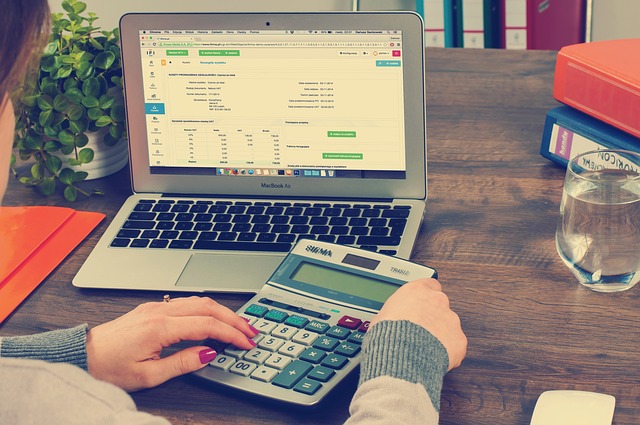The gym industry has certainly undergone some interesting changes in recent years, and it continues to evolve. With our newly adapted work-from-home culture and their daily struggle with work-life balance, people are becoming conscious of their health and beginning to focus more on self-care.
Because of this, gyms have become more than just a place to work out. They have become a hub for the community, a place to connect with others who share your interests and goals, and a destination for personalized health and wellness services.
With these changes, gym businesses have become one of the most influential and profitable businesses in the market. But most importantly, gym owners make a positive impact on the community by helping others get in shape and live healthier and happier life. Even if we forget about the money, for most of us, the experience alone, knowing that we are making a positive impact on people’s lives, is rewarding enough.
The Importance of Gym Valuation: Understanding the True Value of a Gym Business
If you are thinking about buying or selling your gym business or just want to know where you stand in the market, you need to know the worth of your gym and where you stand. Many gym owners pour their heart and soul into their business, making it hard to assess its worth objectively.
That’s where we come in. Gym valuation is a crucial step in the buying or selling process to make sure you don’t overpay or get underpaid and to establish your profit potential.
There are two ways to get into the gym business: buying an existing gym or starting one from scratch. Buying a gym allows you to acquire a profitable business without the hassle of starting from scratch or even turning around a struggling gym for a return on investment. On the other hand, starting a gym from scratch could be a more affordable option with fewer obstacles to overcome.
Regardless of which path you choose, a gym valuation is essential for several reasons. It provides you with hard financial data on the business, helps you determine the likelihood of financing your gym purchase, and establishes your debt commitment. Plus, it gives you a solid foundation for keeping track of your gym’s financials in the future.
So, if you’re serious about buying or selling a gym, make sure to get an accurate and objective gym business valuation. It will give you the confidence to make an informed decision and set you up for success in the exciting world of gym ownership.

Source – Statista
The Valuation Game: Key Factors That Influence the Value of Your Gym Business
To determine the present market value of your gym, it’s essential to consider multiple factors that work together. Let’s dive into these factors in-depth, and you will gain a comprehensive understanding that may be relevant to your situation.
Revenue and Profitability
The most obvious factor that influences gym valuation is revenue and profitability. The more money your gym generates and the higher the profits, the more valuable your business is likely to be. This includes taking into account factors like membership fees, personal training sessions, and merchandise sales.
Equipment and Facilities
Another factor that can impact gym business valuation is the quality and condition of your equipment and facilities. Up-to-date and well-maintained equipment, as well as clean and attractive facilities, can add value to your gym. In contrast, outdated or poorly maintained equipment can detract from the overall value of your business.
Location
The location of your gym can also play a role in its valuation. If your gym is located in a prime area with high foot traffic and easy access, it can add value to your business. On the other hand, if your gym is in a less desirable location, it can negatively impact its value.
Competition
The level of competition in your area can also affect the valuation of your gym. If you’re operating in a highly competitive market, it may be more challenging to attract and retain members, which can impact the value of your business.
Reputation
Finally, the reputation of your gym can also impact its valuation. A gym with a strong reputation for quality service, knowledgeable staff, and a welcoming environment can command a higher value than one with a poor reputation.
With a better understanding of the factors that contribute to the value of your gym, you must be curious to know how exactly we can accurately measure its worth. Let’s dive in and discuss the methods you can use to evaluate the value and impact your gym business has created.
Discover Your Gym Business’s Value Now!
Understanding the value of your gym is essential for expansion, securing investments, or getting ready to sell. Our expertise in gym business valuations provides you with tailored insights for your industry. Hit the ‘Get A Quote’ button for a complimentary initial quote and a preview report.
6 Tried and Tested Methods for Accurately Valuing a Gym Business
Now that we have determined why gym valuation is important, let’s discuss what is the right way to do it.
We know valuing a gym business can be a complex process, as it involves considering a range of factors such as the gym’s equipment, real estate, customer base, and brand reputation.
To accurately determine the worth of your gym, it’s important to use a range of methods and approaches. Going forward, we will explore six tried and tested methods for valuing your gym business.
By understanding these methods, you can make informed decisions about your business and ensure that you are getting a fair price when buying or selling a gym.
Discounted Cash Flow (DCF) Method
When it comes to valuing a gym business, there are many different methods that can be used. One popular method is the Discounted Cash Flow (DCF) analysis. The reason for this method’s popularity is it estimates the value of an investment based on the projected cash flows it’s expected to generate over time.
So, how exactly does DCF work for gym valuation?
First, you’ll need to forecast the expected cash flows for the gym business over a specific period, typically 5-10 years. These cash flows will include revenue from memberships, personal training sessions, and any other sources of income, as well as expenses such as rent, salaries, and equipment maintenance.
Once you have projected cash flows, the next step is to determine the appropriate discount rate. This rate reflects the cost of capital or the return required by investors for taking on the risk of the investment. The discount rate is typically higher for riskier investments and lower for less risky ones.
With projected cash flows and a discount rate in hand, you can then use a formula to calculate the present value of the cash flows. This involves discounting each year’s cash flows back to their present value using the chosen discount rate.
DCF= CF1/(1+r)1 + CF2/(1+r)2 + CF3/(1+r)3+ ……… + CFn/(1+r)n
where:
CF1 = The cash flow for year one
CF2 = The cash flow for year two
CF3 = The cash flow for year three
CFn = The cash flow for additional years
r = The discount rate
For example, let’s say that a gym business generates an average of $50,000 per month in revenue, and the owners expect this to increase by 10% per year for the next five years. They also estimate that expenses will remain steady at $35,000 per month during this time.
Using these estimates, you can calculate the expected cash flows for each year:
- Year 1: $180,000 ($50,000 x 12 – $35,000 x 12)
Now we have established that the gym business generated a total revenue of $600,000 its first year.
Now, assuming that its revenue is going to increase by 10% each year for the next five years, we get:
- Year 2: $240,000 ($600,000 x 1.10 – $420,000)
- Year 3: $306,000 ($660,000 x 1.10 – $420,000)
- Year 4: $378,600 ($726,000 x 1.10 – $420,000)
- Year 5: $458,460 ($798,600 x 1.10 – $420,000)
To determine the present value of these cash flows, you need to apply a discount rate. This is typically based on the rate of return that an investor would expect to earn on their investment.
Let’s assume a discount rate of 8%:
- Year 1: $166,667 ($180,000 / (1 + 0.08)^1)
- Year 2: $205,762 ($240,000 / (1 + 0.08)^2)
- Year 3: $242,913 ($306,000 / (1 + 0.08)^3)
- Year 4: $278,283 ($378,600 / (1 + 0.08)^4)
- Year 5: $312,021 ($458,460 / (1 + 0.08)^5)
By adding up the present values of each year’s cash flow, you can determine the total present value of the gym business. In this example, the present value of the gym’s cash flows is $1,205,646.
While the DCF method is a useful tool for valuing businesses, it is not without flaws. The method relies heavily on assumptions and projections, which can be difficult to predict accurately, and it does not account for dependent factors that can impact a business’s value.
As with any valuation method, it’s important to consider multiple approaches and to seek the advice of experienced professionals when valuing a business.
The EBITDA Method
The EBITDA method is a financial valuation method that stands for “earnings before interest, taxes, depreciation, and amortization.” This method calculates a gym’s value by taking into account its financial performance, specifically its ability to generate revenue and manage costs.
By using this method, investors and gym owners can determine the value of a gym based on its earnings potential rather than just its physical assets.
EBITDA = Net Income + Interest + Taxes + Depreciation + Amortization
To use the EBITDA method in gym valuation, you will need to follow a few steps:
Step 1: Calculate EBITDA
This involves adding up the gym’s revenue and subtracting its expenses, excluding interest, taxes, depreciation, and amortization. This will give you an idea of the gym’s earnings potential, which is a key factor in determining its overall value.
Step 2: Determine a Multiple
The second step is to determine a multiple that will be used to calculate the gym’s value. Multiples are based on industry standards and are typically determined by comparing the financial performance of similar gyms in the same area. For example, if the average multiple for gyms in the area is 3, then the gym’s value will be calculated by multiplying its EBITDA by 3.
Step 3: Calculate the Value
The final step is to calculate the gym’s value by multiplying its EBITDA by the determined multiple. This will give you an estimated value for the gym based on its financial performance.
To illustrate this process, let’s use an example:
Suppose a gym has an annual revenue of $1 million and an annual expense of $700,000. Its EBITDA would be $300,000 ($1 million – $700,000).
The average multiple for gyms in the area is 3, so the gym’s value would be calculated by multiplying its EBITDA by 3. This gives a value of $900,000 ($300,000 x 3).
Using the EBITDA method, the gym is valued at $900,000 based on its financial performance.
The Seller’s Discretionary Earnings
The Seller’s Discretionary Earnings (SDE) method takes into account the gym’s financial performance and provides an estimate of the gym’s value based on the discretionary earnings of the owner.
The SDE method is particularly useful for small businesses, like gyms, that are often owner-operated. The method accounts for the fact that the owner may take discretionary income from the business for personal use, such as salary or bonuses.
This income is not a true reflection of the gym’s profitability and needs to be taken into account when valuing the business.
To calculate the value of a gym using this method, you need to determine the gym’s annual discretionary earnings. This includes the owner’s salary, any bonuses or perks, and other expenses that are not necessary for the gym’s operations.
Once you have this figure, you need to multiply it by a certain factor, which is typically between 1.5 and 3. This factor depends on the size and profitability of the gym, as well as other factors such as the location and competition in the area.
Let’s take an example to better understand how the SDE method works in practice. Imagine a gym in a mid-sized city that is owner-operated and generates an annual revenue of $500,000. The gym’s expenses include rent, utilities, equipment, and staff salaries. The owner takes a salary of $100,000 per year and does not take any bonuses or other discretionary income.
To calculate the gym’s discretionary earnings, we need to subtract the owner’s salary from the revenue and subtract any other unnecessary expenses. Let’s assume that the gym has $50,000 in such expenses. This leaves us with an annual discretionary income of $350,000.
To determine the value of the gym using the SDE method, we need to multiply the discretionary income by a factor. In this case, let’s assume that the factor is 2.5, which is typical for profitable gyms. This gives us a valuation of $875,000 ($350,000 x 2.5).
Of course, this is just a rough estimate, and the actual value of the gym may vary depending on other factors, such as the condition of the equipment, the location, and the competition in the area. However, the SDE method provides a useful starting point for valuing a gym and can help buyers and sellers reach a fair price for the business.
The Book Value Valuation Method
The Book Value Valuation method is among the most used methods to value a gym. This method is based on the gym’s balance sheet and calculates the net worth of the business by subtracting the liabilities from the assets.
The Book Value Valuation method is useful when valuing a gym that has a lot of physical assets such as equipment, property, and inventory. It provides an estimate of the value of these assets and can be helpful in negotiations between buyers and sellers.
To calculate the value of a gym using the Book Value Valuation method, you need first to determine the gym’s total assets. This includes all tangible and intangible assets, such as property, equipment, inventory, and accounts receivable. You then need to subtract any liabilities, such as loans, accounts payable, and taxes owed. This will give you the gym’s net worth.
Read: Top 10 Reasons for Business Valuation in 2023
Let’s take an example to illustrate how the Book Value Valuation method works in practice. Imagine a gym that has $500,000 worth of physical assets, including equipment and property, and $50,000 in accounts receivable. The gym also has $100,000 in liabilities, such as loans and accounts payable.
To calculate the gym’s net worth using the Book Value Valuation method, we need to subtract the liabilities from the assets. This gives us a net worth of $450,000 ($500,000 + $50,000 – $100,000).
However, it is important to note that the book value of the gym may not necessarily reflect its market value. This is because the book value is based on the original cost of the assets rather than their current market value. For example, if the gym has outdated equipment that is worth less than its original cost, the book value may overestimate the gym’s true value.
Similarly, if the gym has intangible assets such as a strong brand or loyal customer base, these may not be reflected in the book value. It also doesn’t take into account the gym’s profitability or potential for growth. It simply provides an estimate of the value of the gym’s physical assets. This means that the method may not be the most suitable for valuing a gym that is highly profitable or has a lot of potential for growth.
The Market Method
When it comes to valuing a gym, the market method is one of the most popular approaches. It involves looking at the sales prices of comparable gyms in the same geographic area.
The market method is based on the principle of supply and demand. Essentially, the value of a gym business is determined by what buyers are willing to pay for it. This approach is commonly used in the real estate industry, where it is used to determine the value of residential and commercial properties.
To apply the market method to a gym, we would start by identifying comparable businesses that have sold in the same geographic area. This might include gyms that are similar in size, equipment, and amenities. Once we have identified these comparable sales, we would then look at the prices that these businesses sold for.
For example, let’s say we are valuing a gym that is located in a suburban area and has the following characteristics:
- 10,000 square feet of space
- State-of-the-art fitness equipment
- Sauna, steam room, and locker rooms
- Membership base of 1,000 active members
- Annual revenue of $1 million
Read: A Complete Guide To Understand Business Valuation
To determine the value of this gym using the market method, we would start by looking for comparable sales in the same geographic area. Let’s say we find three similar gyms that have sold recently:
- Gym A: 9,000 square feet, top-of-the-line equipment, sauna, and steam room, a membership base of 900 active members, annual revenue of $900,000, sold for $1.2 million
- Gym B: 12,000 square feet, standard equipment, no sauna or steam room, a membership base of 1,200 active members, annual revenue of $1.5 million, sold for $2 million
- Gym C: 8,000 square feet, standard equipment, no sauna or steam room, a membership base of 800 active members, annual revenue of $800,000, sold for $800,000
Using these comparable sales, we can determine a range of values for the gym we are valuing. For example, we might use the following formula:
Value = (Price per square foot x Square footage) + (Price per active member x Number of active members) + (Revenue multiple x Annual revenue)
Using the comparable sales above, we might come up with the following values:
- Gym A: $1.08 million
- Gym B: $2.25 million
- Gym C: $720,000
Based on these values, we might estimate that the gym we are valuing is worth somewhere between $1.08 million and $2.25 million.
While the market method is a useful tool for valuing a gym, it’s important to keep in mind that it relies on the availability of comparable sales data.
If there are no recent sales of comparable gyms in the area, it may be difficult to accurately determine the value of the gym using this method.
Read: How To Conduct A Restaurant Appraisal (2023 Guide)
The Asset Method
The asset method is a valuation approach that focuses on the tangible assets of a business. This includes things like equipment, real estate, and inventory.
The idea behind this method is that the value of a business can be estimated by adding up the value of its assets and subtracting any liabilities.
To apply the asset method to a gym, we would start by identifying all the tangible assets of the business. This might include things like:
- Fitness equipment (weights, cardio machines, etc.)
- Real estate (the building or leasehold improvements)
- Inventory (such as supplements, apparel, or other products sold in the gym)
- Furniture and fixtures (lockers, benches, mirrors, etc.)
Once we have identified all the assets, we would then determine their value. This can be done in a number of ways, such as
- Market value: This is the price that the asset would sell for on the open market.
- Replacement cost: This is the cost to replace the asset with a new one of similar quality.
- Salvage value: This is the amount that could be received by selling the asset at the end of its useful life.
Once we have determined the value of all the assets, we would then subtract any liabilities, such as outstanding loans or unpaid bills. The result is the estimated value of the gym.
For example, let’s say we are valuing a gym that has the following assets:
- Fitness equipment: $100,000
- Real estate: $500,000
- Inventory: $10,000
- Furniture and fixtures: $20,000
The gym also has outstanding loans totaling $50,000. Using the asset method, we would calculate the estimated value of the gym as follows:
$100,000 + $500,000 + $10,000 + $20,000 – $50,000 = $580,000
This means that the gym is estimated to be worth $580,000 based on its tangible assets.
While the asset method is a useful tool for valuing gyms, it is important to remember that it does not take into account intangible assets, such as the gym’s brand reputation, customer base, and goodwill.
These factors can also have a significant impact on the value of a business and should be considered when determining its overall worth.
Discover Your Gym Business’s Value Now!
Understanding the value of your gym is essential for expansion, securing investments, or getting ready to sell. Our expertise in gym business valuations provides you with tailored insights for your industry. Hit the ‘Get A Quote’ button for a complimentary initial quote and a preview report.
Conclusion
Valuing a gym business is a critical process that every gym owner needs to undertake to understand the true worth of their business. Whether you’re planning to sell your gym or just want to keep track of its financial health, understanding the key factors that influence its value and using tried and tested valuation methods can help you make informed decisions about your business.
Remember to consider factors such as revenue and profitability, equipment and facilities, location, competition, and reputation. By taking steps to improve these factors, you can increase the overall value of your gym and position yourself for success in the competitive fitness industry.
After all that we have discussed, you might be considering working with a forensic accountant who specializes in gym valuations to cater to your needs. But one question still remains unanswered, where can you find one?
That’s where Arrowfish comes in.
You want to be sure that you are working with someone who is experienced, knowledgeable, and trustworthy. And that is exactly why Arrowfish is the premier choice for your forensic accounting needs.
Our team of forensic accountants is highly skilled, with 20+ qualifications, and trusted to handle even the most intricate financial cases. With 200+ years of combined experience across a diverse range of industries, our experts have assisted a variety of clients, including business owners (like yourself), insurance companies, attorneys, banks, and individuals.
Explore our business valuation services in Utah, Dallas, San Antonio, Texas, Denver, Las Vegas, Chicago, San Diego, Washington, and Houston.
Jeremiah Grant is the Managing Partner of Arrowfish Consulting. In addition to acting as a primary liaison for many of the firm’s engagements, He primarily focuses on business valuation and economic damages expert witness assignments, in addition to forensic accounting and insurance claims analysis.










